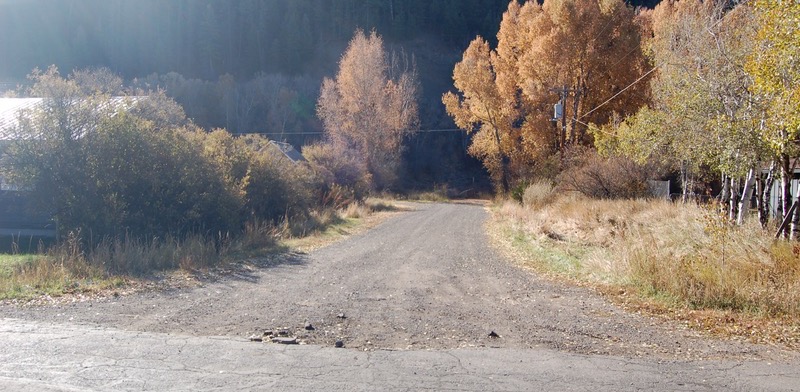As mentioned in Part Two, the Town government recently purchased $400,000 worth of property next to the old swimming hole — Cotton Hole — and will be constructing a ten-foot-wide concrete trail through the park. The property purchase might have been necessary to prevent a future investor from buying up the lots surrounding Cotton Hole and eliminating public access to a traditional, rustic recreational amenity. I’m not sure how much the Town spent creating the nearby whitewater feature, but we understand that the new feature is attracting even more traffic, and has required the Town to develop an ad hoc parking area adjacent to the river.
Cars. They must be accommodated.
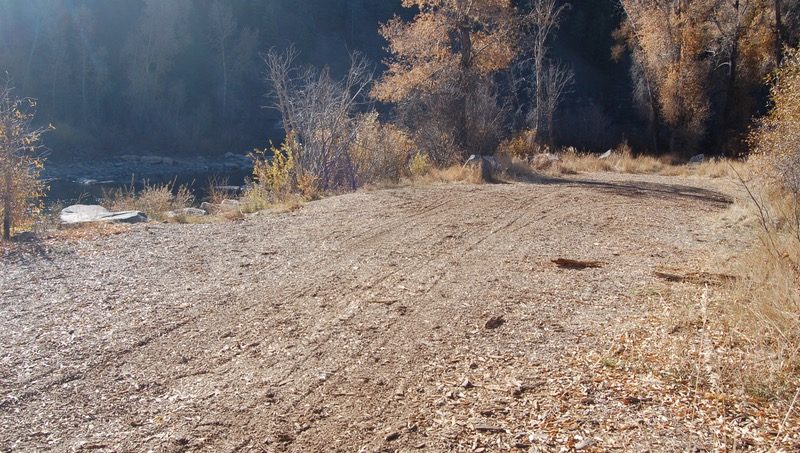
Now that Cotton Hole is an official Town project — after more than a century of traditional community use of privately owned property — the next step is to create pavement. For more than 100 years, residents have been using the swimming hole and have found ways to park on Hermosa Street and walk along the trails leading to the river. But things have to change, and change is not always cheap.
The engineers at Davis Engineering, working closely with Town staff, developed two options for accommodating vehicles at the new park, in spite of the fact that a ten-foot-wide pedestrian trail would allow people to conveniently access the park on foot. One option is a cul-de-sac in the middle of the park. The other is a roadway going through the park and connecting to the Hermosa Street Alley, leading back to 2nd Street.
Here’s how the Hermosa Alley looks in 2019.
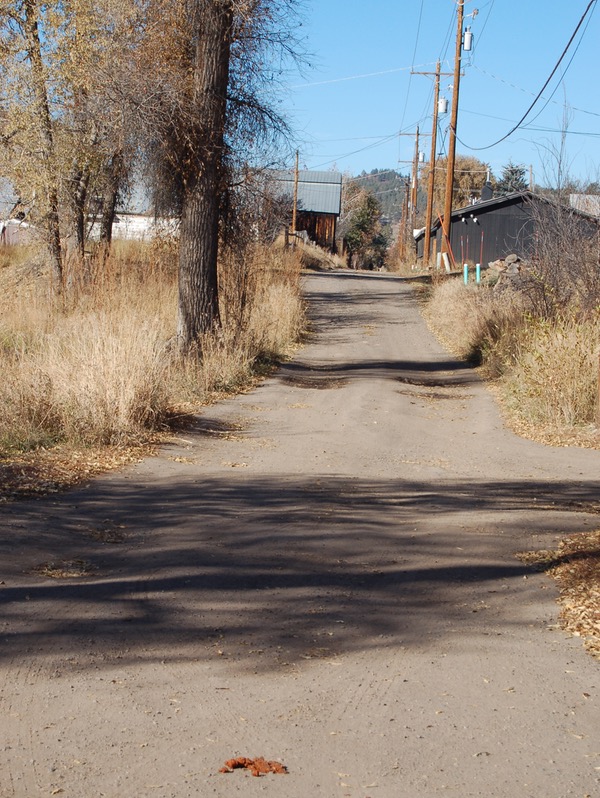
This alley was never intended as a “public street.” It provides back yard and garage access for a handful of homes, and it’s one-third the width of a normal street right-of-way. Buildings are built right on the property lines.
Here are those engineering drawings again, showing the two ideas for vehicle movement and parking. The yellow line indicates the River Walk pedestrian trail; the light gray shows the proposed paved street extensions of Hermosa Street as designed by the engineers.

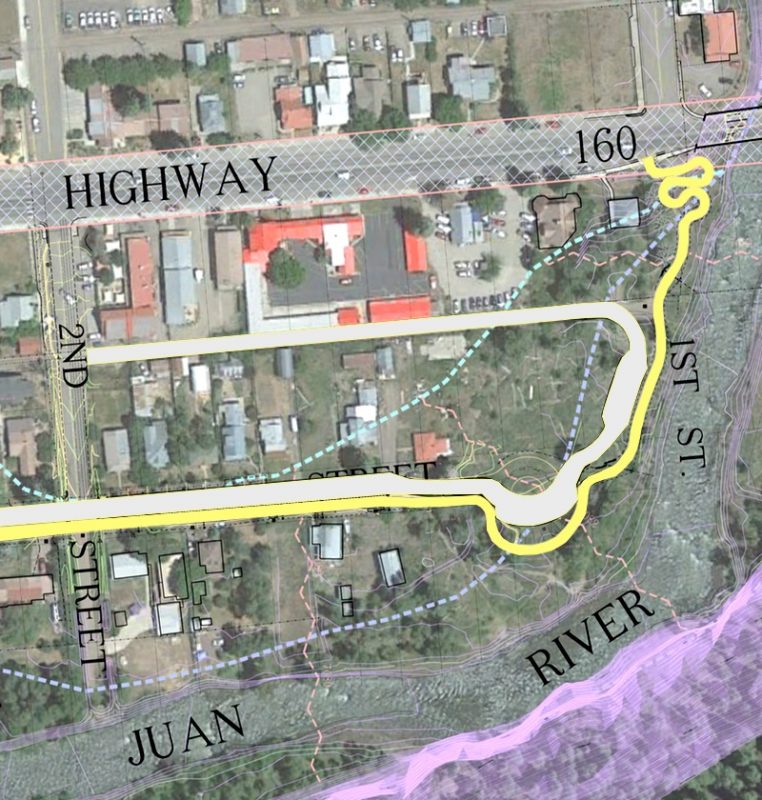
The rough estimates for the Town-Park-to-First-Street portion of the River Walk multi-use trail, including the improvements for vehicle access and parking: about $950,000. Call it $1 million.
Looking at these drawings last Thursday, the Town Council was not willing to simply rubber stamp either of these “vehicle access” ideas, however. Here’s Council member David Schanzenbaker:
“I dislike both ideas. Both options. I mean, both of them — in my opinion — rip right through the middle of the park. What I think of, and what the entire community thinks of as ‘Cotton’s Hole’, is a rustic little natural area. Both of these [vehicle access] options, in my opinion, destroy that. I feel like we’re trying to force 21st century circulation requirements onto a non-compliant dead-end street that has a river enforcing that dead-end. So whatever option we come up with, to try and ‘circulate’ vehicles is not going to be a good one. We’re chewing up most of the public land trying to accomplish that. In my opinion.
“So, I want us to look more outside the box. We talked earlier this summer… I had asked about South 2nd Street, south of Hermosa Street? Is there any way to use that portion of our right-of-way to accomplish some of our ‘circulation slash parking’ needs?”
Mr. Schanzenbaker is here referring to another dead-end street, one block west of the Hermosa dead-end — a semi-secluded part of the Town-owned streetscape that has never been paved or developed. It looks like this in 2019:
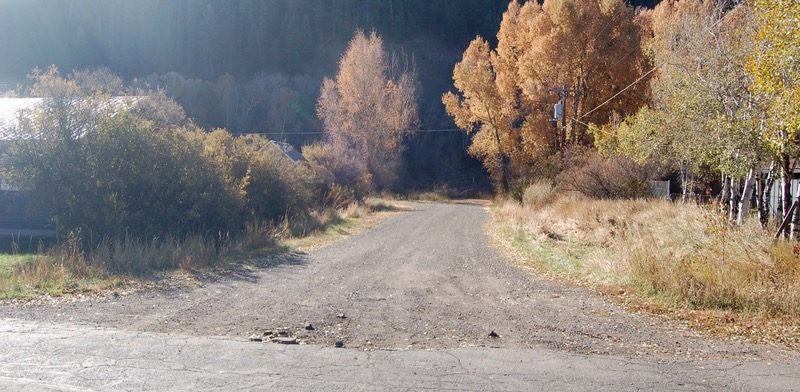
Presumably, this dead-end street could fairly easily provide parking for Cotton Hole Park… if we were thinking outside the box, and actually wanted to preserve the rustic character of the old swimming hole…
Engineer Mike Davis:
“You could certainly create a parking lot. But it doesn’t do anything for circulation. I mean, right now, you have a dead-end street [on Hermosa] so there’s no proper way to turn around. If a truck goes down there, they have to back out.”
So… maybe… erect a sign? “Dead End. Resident Parking Only.”
And another sign directing people to park on South 2nd Street? And let them walk one block to a rustic park? I imagine even tourists could figure that out.
The River Walk is, in some ways, the prize jewel of the Town’s Parks Department — the proof that our little rural town is pedestrian-friendly and walkable, just like any other well-heeled resort/tourist community in Colorado. To spend another $1 million on another portion of our ‘riverfront’ trail? Goes without saying. No question about it. And the creation of yet another ‘municipal park’ along the trail? Also goes without saying.
I began writing about Pagosa politics in 2004, just as the town was coming out of a difficult economic period. We’d suffered a hit to tourism as a result of the 2002 drought and concurrent wildfires… while the nation as a whole was still struggling to climb out of the 2001 Recession.
One thing you can do, if you want to understand politics and finances in a small town, is look at government budgets.
In 2005, the Town of Pagosa Springs spent about $143,000 maintaining its parks. It had revenue that year, from “Park User Fees,” of about $34,000. So the net cost of maintaining and improving our Town-owned parks was approximately $99,000. A bit less than 3% of the Town’s $4 million budget in 2005. (This included $184 for “improvements” made to Reservoir Hill Park.)
Thirteen years later, in 2018, the Town government spent about $957,000 maintaining and improving our existing parks and trails. “Park User Fees” were estimated at $1,200 in that budget. It appears that park development and maintenance chewed up nearly 10% of the Town budget in 2018. But that’s the way government grows, if we let it.
For more than a century, I assume, families have been walking down Hermosa Street to an undeveloped beach at Cotton Hole, to enjoy a relaxing hour or two in one of the quieter, wilder spots in downtown Pagosa. Is that experience worth saving?
They paved paradise, and put up a parking lot…
— Joni Mitchell, ‘Big Yellow Taxi’

